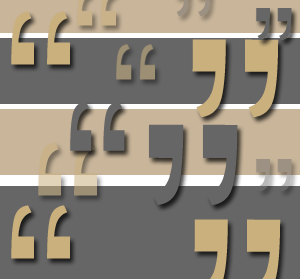
Museum Park Communicates Environmental Messages
Public parks are often built to celebrate the values and institutions held sacred by a society. Urban parks, for example, often contain memorials and other monuments designed to commemorate the values of freedom, liberty, courage, and equality. Even national parks have this important communicative function. By calling forth certain feelings and attitudes, they remind individuals of the value of open, untamed space.
One particular park, in Raleigh, North Carolina, communicates in a manner that speaks to feelings and attitudes about the environment. Attached to the North Carolina Museum of Art, the Museum Park--along with the artworks housed on its grounds and the Park's overall landscape design--are best understood as creative and invigorating forms of environmental communication. Only here, the messages are not overly technical or excessively emotional. Instead, the messages connect with the Museum's local urban and rural surroundings in ways that are educational and provocative for visitors. The environmental artworks in the Museum Park represent a model for other museums and public installations that seek to do more than simply display public art. This is because the Museum Park actually encourages visitors to think about their place in the natural world. As a result of experiencing the park's artworks, visitors may achieve a fuller understanding of nature at a time when citizens and their political leaders are wrestling with managing rapid growth and dwindling natural resources.
Artist Steven Siegel's "To See Jennie Smile" provides a good illustration of the link between art and environmental communication. This sculpture, tucked away in the woods along one of the Museum Park's trails, is a giant steeple-like stack of newspapers, folded and nailed around a split gum tree and two-by-fours. It is slowly biodegrading into the forest floor on which the sculpture has been anchored. Like other artworks in the Museum Park, "To See Jennie Smile” is constantly changing. In this case, the sculpture is gradually shrinking and collapsing into the earth. Seigel's mountain of paper reveals the possibility that even as the materials we take from nature (here, the wood pulp for newsprint) remain impermanent, they serve our purposes for periods of time. Siegel's choice of compacted newsprint displays the relationship between humans and nature metaphorically, as layered, where the levels of natural history extend well beyond the bounds of human history. The installation is therefore a striking reminder that nature will far outlast the things of human construction.
On the other hand, the sculpture suggests that in order for humans to record their histories onto paper, they must at the same time find ways of recycling or regenerating the original paper source. This is an environmental lesson: For humans to have a historical record, the trees and forest must have a future. Walking around Siegel's work, a visitor becomes very sensitive to this environmental imperative. "To See Jennie Smile" reminds visitors of the value of recycling old cans, newspapers, and bricks. Thus it underscores for everyone who sees the work that they can also recycle these items once they leave the Museum Park.
In addition, "To See Jennie Smile" illustrates the value of a strong community identity as part of environmental communication. This message is conveyed pictorially, by the way the layers of newspaper are positioned. Those with the fold or the crease of the newspaper facing out will far outlast the layers in which the page edges face out, clearly rotting from the elements. The idea is that individuals can succeed in protecting the environment if they form communities committed to that purpose.
Unfortunately, much natural space has already been lost, and neither the Museum Park nor landscape projects like it can bring back or recreate that which is gone forever. Visiting places like the Museum Park, even entering into the park's more isolated installations like Chris Drury's “Cloud Chamber for the Trees and Sky" - a stone and thatch chamber, the interior of which reveals images of overhead trees and clouds projected onto the walls and floor through a mirror in its roof--cannot reproduce a hike into a remote wilderness area.
We also note with some concern the way environmental messages found in the Museum Park may be used by developers to actually promote further commercial and residential development. In fact, Raleigh-based developers market new housing projects around the idea of different types of parks and the experiences with nature that are made possible by living in a butterfly park or a tree house park. Our concern is that persons enjoying these so-called park-like developments may easily lose sight of the destruction of pre-existing spaces like farms and forests that were necessary to build those new housing units.
Spaces like the Museum Park are crucial for our environmental future. As one of our students declared upon visiting the Park, "Perhaps we need bigger gestures outside in nature to help us realize who we are, what we are doing, and the consequences of our actions." By illustrating how the Museum Park conveys important lessons about recycling, conservation, and other environmental initiatives, our analysis provides a clear illustration of just these kinds of gestures.

